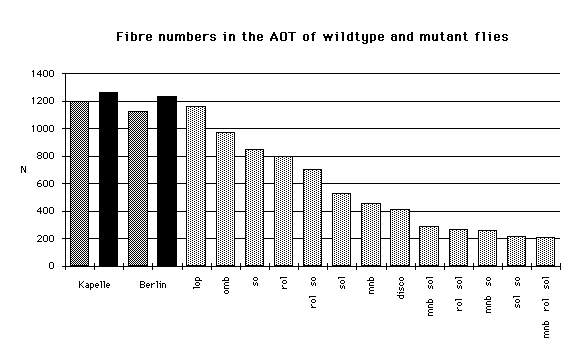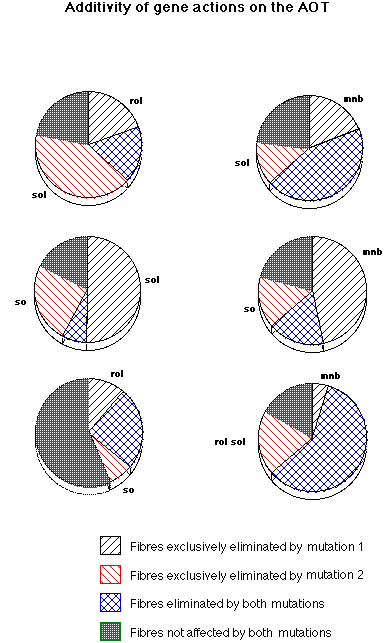Figure 1 (data from Table I)

Abstract The influence of mutations in seven neurological genes on the number of fibers in the anterior optic tract (AOT) of Drosophila melanogaster has been investigated. It is shown that the number of fibers in the AOT can be drastically reduced in single and especially in multiple mutants. However, no evidence for synergistic interactions between the sample of mutations used in the sine oculis (so) , reduced optic lobes (rol) ,minibrain (mnb) and small optic lobes (sol) genes is obtained at the level of the AOT. The rol KS222 and so mutations eliminate similar fiber sets in the AOT, which are distinctly different from those eliminated by sol KS58 and mnb 1 .
Cross-sections of fibers in the anterior optic tract were counted on electron micrographs. "Kapelle" and "Berlin" denote males (black bars) and females (gray bars) of the respective wild type strains. lop = lobula plate-less; omb = optomotor blind (H31); so = sine oculis (1); rol = reduced optic lobes (KS221); mnb = minibrain (1); disco = disconnected (1); respective multiple mutants. Only male mutants were evaluated.

Additivity of gene actions on the fiber numbers in the AOT of male flies. In no case did the loss of fibers in the multiple mutants exceed that of the sum of the fibers lost in the single mutants. 100% corresponds to the mean fiber number in males of the wild type Berlin strain (= 1232.5). In the last case the mnb mutation was added to the double mutant rol sol . It hardly has any additional effect on the fiber number. This was expected as mnb and sol have similar effects on the AOT (case 2) as is the case with so and rol (case 5).